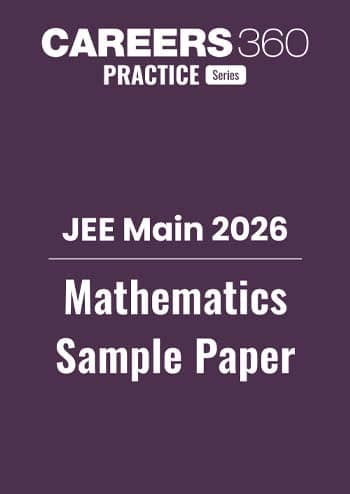Law Of Tangents - Practice Questions & MCQ
Quick Facts
-
7 Questions around this concept.
Solve by difficulty
Wlth the usual notation, in $\triangle A B C$, if $\angle A+\angle B=120^{\circ}, a=\sqrt{3}+1$ and $b=\sqrt{3}-1$, then the ratio $\angle A: \angle B$, is:
If ,x is in the first quadrant, find the value of
.
In a triangle ABC , if $\angle C=90^{\circ}, a=3 b$, then $(A-B)$ equals
Latest: Free All-India JEE Main 2026 Mock Test - Attempt Now
JEE Main Sample Papers: Physics | Chemistry | Maths | Top 30 Repeated Questions
JEE Main QP & Mock: Previous 10 Year Questions | Chapter Wise PYQs | Mock test Series
JEE Main Most Scoring Concept: January 2025 Session | April 2025 Session | Overall
$
\text { In triangle } A B C \text {, if } \angle C=90^{\circ}, a=3 b \text {, then }(A-B) \text { equals }
$
Concepts Covered - 1
Tangent Rule or Napier's Analogy
For any $\triangle A B C$,
$
\tan \left(\frac{\mathrm{A}-\mathrm{B}}{2}\right)=\frac{\mathrm{a}-\mathrm{b}}{\mathrm{a}+\mathrm{b}} \cot \frac{\mathrm{C}}{2}
$
To prove this, we will be using the sine rule and formula of sum/difference into a product of sine and cosine.
From the sine rule, we have
$
\begin{aligned}
& \frac{a}{\sin A}=\frac{b}{\sin B}=\frac{c}{\sin C} \\
& \Rightarrow \quad \frac{\sin \mathrm{~B}}{\sin \mathrm{C}}=\frac{\mathrm{b}}{\mathrm{c}}
\end{aligned}
$
Using the Componendo and Dividendo theorem
$
\Rightarrow \quad \frac{\sin B-\sin C}{\sin B+\sin C}=\frac{b-c}{b+c}
$
the formula of sum/Difference into products of sine
$
\begin{aligned}
& \Rightarrow \quad \frac{2 \cos \left(\frac{\mathrm{~B}+\mathrm{C}}{2}\right) \sin \left(\frac{\mathrm{B}-\mathrm{C}}{2}\right)}{2 \sin \left(\frac{\mathrm{~B}+\mathrm{C}}{2}\right) \cos \left(\frac{\mathrm{B}-\mathrm{C}}{2}\right)}=\frac{\mathrm{b}-\mathrm{c}}{\mathrm{~b}+\mathrm{c}} \\
& \Rightarrow \quad \cot \left(\frac{\mathrm{~B}+\mathrm{C}}{2}\right) \tan \left(\frac{\mathrm{B}-\mathrm{C}}{2}\right)=\frac{\mathrm{b}-\mathrm{c}}{\mathrm{~b}+\mathrm{c}} \\
& \Rightarrow \quad \tan \frac{\mathrm{~A}}{2} \tan \left(\frac{\mathrm{~B}-\mathrm{C}}{2}\right)=\frac{\mathrm{b}-\mathrm{c}}{\mathrm{~b}+\mathrm{c}} \\
& {\left[\because \frac{\mathrm{~B}+\mathrm{C}}{2}=\frac{\pi-\mathrm{A}}{2} \Rightarrow \cot \left(\frac{\mathrm{~B}+\mathrm{C}}{2}\right)=\cot \left(\frac{\pi}{2}-\frac{\mathrm{A}}{2}\right)=\tan \frac{\mathrm{A}}{2}\right]} \\
& \Rightarrow \quad \frac{\tan \left(\frac{\mathrm{B}-\mathrm{C}}{2}\right)}{\cot \frac{\mathrm{A}}{2}}=\frac{\mathrm{b}-\mathrm{c}}{\mathrm{~b}+\mathrm{c}} \\
& \Rightarrow \quad \tan \left(\frac{\mathrm{~B}-\mathrm{C}}{2}\right)=\frac{\mathrm{b}-\mathrm{c}}{\mathrm{~b}+\mathrm{c}} \cot \frac{\mathrm{~A}}{2}
\end{aligned}
$
By using the same method, other formulas can also be proved
So,
$\begin{aligned} & \tan \left(\frac{\mathrm{A}-\mathrm{B}}{2}\right)=\frac{\mathrm{a}-\mathrm{b}}{\mathrm{a}+\mathrm{b}} \cot \frac{\mathrm{C}}{2} \\ & \tan \left(\frac{\mathrm{~B}-\mathrm{C}}{2}\right)=\frac{\mathrm{b}-\mathrm{c}}{\mathrm{b}+\mathrm{c}} \cot \frac{\mathrm{A}}{2} \\ & \tan \left(\frac{\mathrm{C}-\mathrm{A}}{2}\right)=\frac{\mathrm{c}-\mathrm{a}}{\mathrm{c}+\mathrm{a}} \cot \frac{\mathrm{B}}{2}\end{aligned}$
Study it with Videos
"Stay in the loop. Receive exam news, study resources, and expert advice!"













